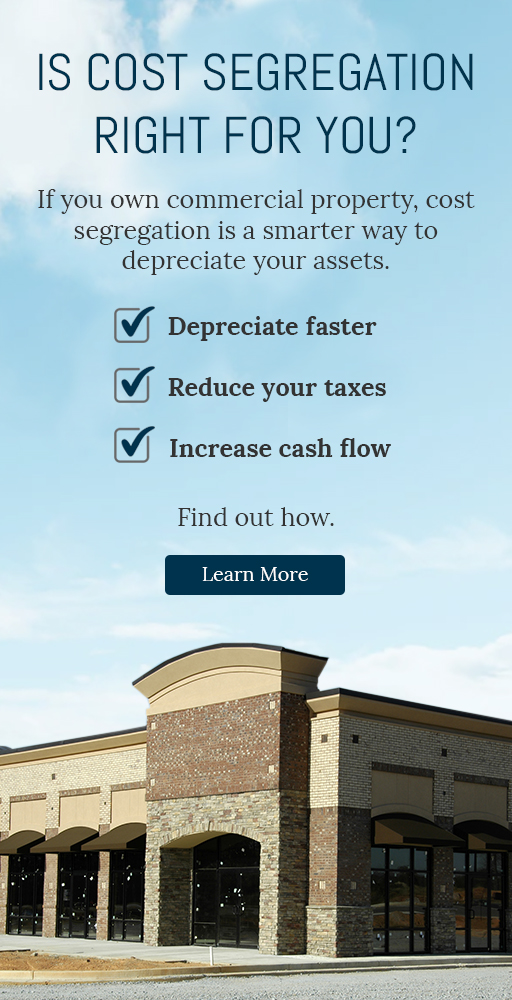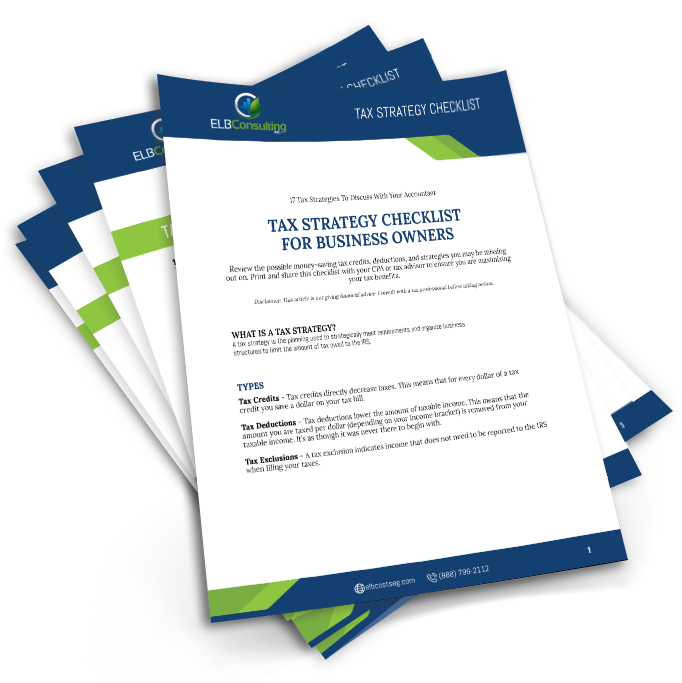Real estate developers and investors who construct, acquire, or rehab/renovate commercial real estate property (residential rental or income generating commercial property) can realize significant tax savings and increased cash flow via an engineered cost segregation study.
What is a cost segregation study?
A cost segregation study essentially dissects and allocates a specific cost to all the components of a property. This includes the fixed asset costs incurred to build, acquire, or rehab/renovate the building and the land improvements. As such, a professional engineer can then reclassify qualified components into a shorter life asset class for depreciation purposes. Also detailing the fixed assets that are straight-line depreciation.
This methodology is considered fully engineered and accounted, the highest level of study defined by the IRS.
“Cost Segregation is a lucrative Tax Strategy that should be used in almost every purchase of commercial real estate.” IRS, Wall Street Journal
There are four (4) other methods and study types that incorporate some engineering into a; 1) survey, 2) residual estimation, 3) sampling/modeling, or 4) “rule of thumb” approach. These studies are often called ‘engineering-based’ and commonly performed by a ‘qualified’ practitioner, perhaps an engineer, or parts outsourced to field agents to then be collated by an in-house engineer or practitioner.
As a result, these do not detail all the building components. The straight-line assets are bundled together. Thus, they tend to leave a portion of the owner’s money on the table. We see anywhere from 5% to upwards of 15% less depreciation benefits. Methodology matters.
Rental/residential real estate is depreciated over a 27.5 year life. While commercial real estate has a 39 year life. The components that a cost segregation study will reclassify into shorter depreciable lives of 5, 7, or 15 years are what create this accelerated depreciation, to generate substantial current year tax deductions.
So, what does this really mean to taxable income?
A shorter depreciable life means more tax deductions now. More tax deductions mean a reduction in taxable income. The reduction in taxable income equates to more cash in your pocket.
“Cost Segregation is not a tax shelter. It is a specifically defined and guided I.R.S. tax reduction tool. Ninety percent (90%) of all commercial property investors are overpaying their federal income taxes.” The Journal of Accountancy
Let’s look at two 2020 client excellent examples of fully engineered tax studies performed by ELB Consulting.
Client A – Multifamily Acquisition:
Client A acquires an Arizona apartment community for $2,500,000. Using a land allocation (the raw land is not depreciable) of $500,000, the depreciation basis is $2,000,000. If using the 27.5 year straight-line depreciation, the tax deduction would be $72,727 per year.
However, Client A decided to engage us to perform a cost segregation study. ELB was able to identify $1,058,916.30 of the asset costs to be reclassified over 5, 7 and 15 years (53% of the depreciable basis).
By utilizing this study and electing 100% Bonus Depreciation, the client has gone from a $72,727 deduction in year one, to $1,058,916.30 deduction in year one. This contrast is substantial.
Client B – Free Standing Retail Acquisition
Client B acquires a Colorado two (2) premium tenant retail building $2,000,000. Using a land allocation (the raw land is not depreciable) of $400,000, the depreciation basis is $1,600,000. If using the 39 year straight-line depreciation, the tax deduction would be $41,026 per year.
Client B also decided to engage us to perform a cost segregation study. ELB was able to identify $747,496.46 of the asset costs to be reclassified over 5, 7 and 15 years (47% of the depreciable basis).
By utilizing this study and electing 100% Bonus Depreciation, the client has gone from a $41,026 depreciation deduction in year one, to $747,496.46 depreciation deduction (or passive loss) in year one. Client A is a Real Estate Professional, so this significant tax deduction was used against ordinary income.
Ultimately, cost segregation is tax strategy that improves cash flow and capitalizes on the time value of money. Considering today’s anticipated tax increases and changes, cost segregation can be used as a hedge against future increases.




